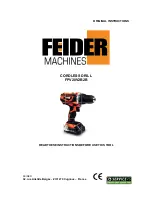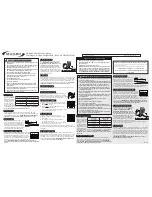
19
TMN/TMP SERIES
OPERATING MANUAL
nection to the bus bars should be made by means of ¼ - inch bolts with
nuts. The output wires or bus bars should be sized in accordance with
the load current and length of conductor.
18.4
Contact Resistance. The connecting wires or lugs should be clean, and
a tight, firm connection should be made to the output bus bars to minimize
contact resistance.
18.5
Control and Supervisory Signal Connections. These connections are
made to J1, a subminiature D 25-pin connector (Positronics No.
SD25F0S5OOX), by means of the mating connector. Details for these
connections are given in Sections 15.1 and 15.2.
18.6
Cooling. Each TMN/TMP module is cooled by an 80mm, internal DC ball
bearing fan. For proper cooling the area in front of the fan and around
the air exits should be kept clear for unimpeded air flow.
19.0
MAINTENANCE
No routine maintenance is required on the TMN/TMP Series except for periodic
cleaning of dust and dirt around the fans and the ventilation holes. A small
vacuum nozzle should be used for this.
20.0
TMN/TMP MODULES AND RACK SETUP AND TESTING
20.1
The TMN/TMP modules and rack can be initially tested mounted in a rack
or on a test bench. The power system is initially tested one module at a
time in the
rack.
20.2
Connect a three-wire AC power line to module no. 1 on the back of the
rack. Be sure to connect the AC safety ground wire to the rack ground
terminal. Do not plug the AC line into the 230VAC source yet.
20.3
Connect a resistive power load across the DC output terminals. This load
can be a DC electronic load that is set to the resistive mode or a high-
power resistor that has the proper power capacity and cooling. For this
test the load should be between about 10% and 50% of the full load rating
of the module. For the 24V TMN module the resistor should be between
1.1 and 5.7 ohms; for the 28V TMN module it should be between 1.6 and
7.8 ohms; and for the 48V TMN module it should be between 4.6 and 23
ohms.





































